Peter Dornauf – 27 October, 2015
The completed product is a three dimensional sculpture, an exact imitation, except that the form collapses in on itself so that it looks like a deflated balloon, a flat tire, an object that has had all the juice sucked out of it. It lies there on the gallery floor, forlorn, helpless, bloodless and in a state of ‘decay'.
Art and imitation have a long history. The simulacrum of course is a moveable feast along a spectrum that ends at the hyperreal where the status of the ‘real’ disappears up its own backside. Plato wasn’t pleased with the whole business and banished poets from his utopia, ironically a sort of hermetically sealed hyperreal universe in itself. A copy of a copy was not the pure road to truth for this strict metaphysician.
Picasso retorted by saying that art was a lie to take us closer into the truth, which is accurate enough as far as it goes. Truth, of course, has many advocates.
American superrealist, Duane Hanson, in an attempt to capture an ‘absolute’ truth, made casts of his subjects from live models and then filled the moulds in a process that went toward reproducing an exact duplication of the original. Real people. One better than Madame Tussauds. Imitation to the nth degree.
New Zealand artist, Glenn Burrell, has a similar method, covering his subjects in layers of paint, (wheelbarrows, lawnmowers, trailers), then peeling off the thick skin and re-joining it to itself to create a meticulously finished object with all the intricate detail imprinted like a carbon copy on the membrane of paint. A ready-made, once removed.
The completed product is a three dimensional sculpture, an exact imitation, except that the form collapses in on itself so that it looks like a deflated balloon, a flat tire, an object that has had all the juice sucked out of it. It lies there on the gallery floor, forlorn, helpless, bloodless and in a state of ‘decay’.
One recalls all those tabloid stories about bloodsucking extra-terrestrial vampires visiting American ranches on the prairies to suck the life out of unsuspecting cattle. Burrell’s pieces, a tennis ball, a line of guttering, a trailer, all look like alien forces have been at work from the inside.
There is a very real sense of a disjoined separation between the object’s familiarity, in all its banal and precise detailed form, and the collapsed manifestation in the gallery space. Reality takes on the surreal at this point and one is immediately reminded of Salvador Dali’s limp figures populating his dreamscapes. In The Persistence of Memory, his famous flaccid watches suggest death and decay - complete with flies and ants crawling across sagging timepieces that have collapsed in a state of putrification.
Burrell doesn’t want to blur the boundaries between image and reality. Instead he, like Dali, endeavours to arrest our attention to the frisson between life and death in the ordinary and the everyday. His backyard vernacular subjects - lawnmower, trailer, guttering and the like have been treated before by Pop artist, Dick Frizzell, but here, in Burrell, the ordinariness takes on another dimension, employed in the exploration of the human condition.
However, instead of being called, for example, “The Death of a Wheelbarrow”, the collapsed yet immaculately rendered barrow is given the title, Cirsium Vulgare (Spear Thistle), an invasive weed that one might find growing the back garden. The thistle has been given the same painterly treatment, and lies flat and trompe l’oeil-like in the handcart to demonstrate not only functionality but also the theme of demise: time and its arrow pointing relentlessly in one direction.
Burrell nonetheless does not take a morbid view of his subject. Indeed he almost revels in the sagging skin of all these hapless objects. They give the appearance of some time-lapse photography that has been tracking the dissolution of things and abruptly frozen at the point where contagion and corruption are about to split open the forms, before they dissolve back into the earth. For some reason, this excites the artist.
To explain this he quotes John Ruskin and his 1858 lecture The Work of Iron, where the Victorian art critic waxes lyrically on the subject of rust. He sees it not in negative terms, as spoilage, but rather simply as a beautiful organic process that returns iron to the soil in an enriching process. One year later, Charles Darwin would publish his On the Origin of Species, which would describe a similar process, only on a grand cosmic scale.
The Victorians were not quite so sanguine about such evolutionary sequence, but Burrell is upbeat, even buoyant, as expressed in the title to the show - Destination: Liquid Sunshine. In his creative process he has allowed the rust flakes on the host object to remain adhered to the paint which he describes as “an exciting moment in time; the flux between life and death.” As if to underscore such exhilaration, the colours employed in his chrysalis-like constructions are candy coloured, pastel shades which the artist claims “offer the viewer a gateway to their own fantasy world.”
Others might see only nightmares in these macabre sunken rubbery shapes, like something out of Edgar Allan Poe. The mauves and off-whites merely add to the slightly sallow quality of the work. Such sickly hues remind one of Warhol’s Electric Chair series, but for Burrell the collision of allure and grunge is a frisson that augments disparity as well as irony, here in this New Zealand Ash Can School of art.
The most poignant image in the show is that of a tennis ball, more naturalistically coloured than the others, set on a plinth, looking as if it has been pulled out from under a hedge after lying there for a year or two. Entitled At Rest, this shrivelled and hairless creature evokes not excitement but sadness in its wan and washed-out demeanour, a touching ‘monument’ to times past, to youthful memories of backyard romps. It evokes something of the wistful atmosphere captured by the Belgian Symbolist, Fernand Khnopff, in his 1889 pastel work, Memories. The image pictures a group of seven young women arranged in a frieze, standing statuesquely in a brooding evening light, holding in their gloved hands their tennis rackets in a rather charged and enigmatic fashion.
There is a more straightforward fascination in Burrell’s other works, common backyard objects that look like they have been run over by a steamroller. An element of the cadaverous pervades these pieces that simultaneously take up a touch of the comic. In this respect they recall the work of Pop artist, Claes Oldenburg, and his rendering of solid objects in a crumpled state, like his Soft Washstand, made of vinyl and stuffed with kapok. In Burrell’s case there is, however, a much more ghostly feel to his creations as he, like say Rohan Wealleans, pushes the boundaries of paint. The configurations though, as their objects twist, melt and writhe, echo Sylvia Siddell’s frantic kitchen sink accoutrements or Philip Clairmont’s bathrooms.
In Burrell’s hands tool shed implements and machinery never looked so unsettling.
Peter Dornauf
Recent Comments
John Hurrell
Burrell's use of layers of paint applied to an object to form a skin seem a fascinating blend of New ...
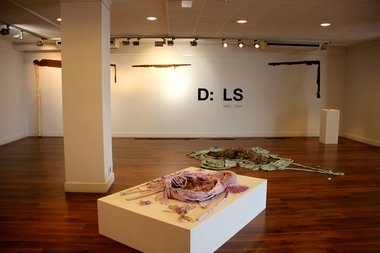
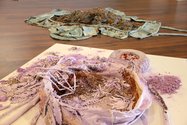

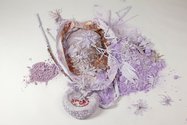
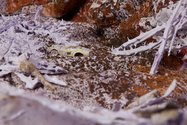
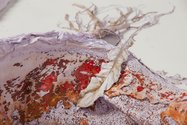
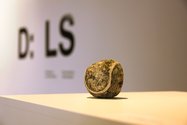
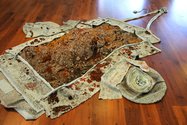
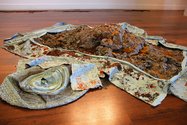
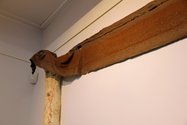

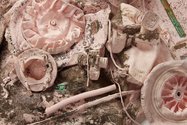
 Advertising in this column
Advertising in this column Two Rooms presents a program of residencies and projects
Two Rooms presents a program of residencies and projects



This Discussion has 1 comment.
Comment
John Hurrell, 8:48 a.m. 28 October, 2015 #
Burrell's use of layers of paint applied to an object to form a skin seem a fascinating blend of New Zealander Helen Calder, with her suspended or folded 'hides', and Canadian Eric Cameron, who covers organic objects with gesso thousands of times so they eventually disappear or rot away internally, making a new form. As 'collapsed' impressions - rich in detail taken from found surfaces - they seem loaded in evocative poetic resonances. As you say, Peter, they have a distant affinity with Rohan Wealleans.
Participate
Register to Participate.
Sign in
Sign in to an existing account.